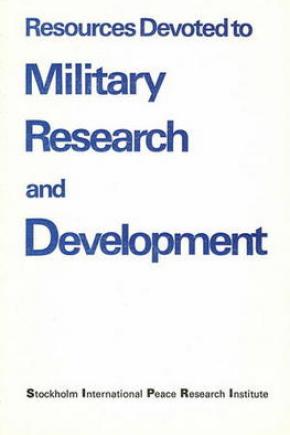Resources Devoted to Military Research and Development
During the postwar period, the efforts made to apply science and technology to human ends have increased dramatically. Regrettably, technological advance in weaponry has been foremost among the objectives to which the planners and practitioners of applied research have addressed themselves. Although its share has diminished recently, weapons development is still the largest single objective of world research and development efforts.
This study represents the first attempt ever made to assess the overall size of worldwide military research and development efforts. Year-by-year estimates of expenditures for military research have been assembled for 20 industrialized countries; and the study provides an extensive analysis of the postwar trends in military R&D spending here. It then turns to the question of the overall size of the military R&D efforts supported in the remaining industrialized and non-industrialized countries during the 1960s. Two main indicators are examined: the number and type of major weapons development projects undertaken during 1960–1968, and the level of total military expenditure.
The main conclusions, which are summarized in the first part of the study, include an estimate of world expenditure on military research and development, and an indication of the countries where the capacity to develop and produce new weapons is growing rapidly.
This study was originally published in World Armaments and Disarmament, SIPRI Yearbook 1972. It is presented here with minor revisions and with the addition of an extensive bibliography.
I. Introduction and summary
II. The pattern of military R&D spending in 22 countries
III. The size of worldwide military R&D efforts
Appendix A. Note on sources and methods
Appendix B. Statistical tables
Appendix C. US estimates of Soviet expenditure on military research: An analysis of data published in 1971 and early 1972

